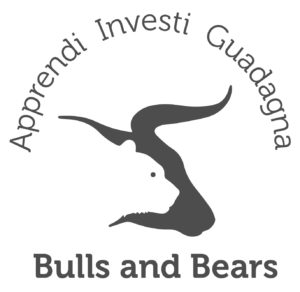In this post we host a contribution about platform business models by Paolo Cervini, partner of ECSI Consulting, a management consulting firm founded in Italy in 2012 and recently named among the Top 5 Global Innovation & Strategy Consulting firms worldwide by the independent company ALM.
Source: MIT Sloan Management Review
In the summer of 2016, I started reading the book “Platform Revolution” by MIT professor Marshall Van Alstyne, which opened my eyes to the features of a business model with a potential disruptive impact on a company and, therefore, also for investors.
This is the so-called multi-sided platform business model.
Interested in deepening the model, we have involved Van Alstyne in ECSI Consulting, applying in the last 12 months some of these logics in various projects in Italy and abroad.
What is a “multi-sided platform business model”?
It is a model for which a company is able to facilitate a series of interactions and transactions between one or more group of suppliers (“provider”) and consumers / users (“users”).
An excellent platform company manages to create the ideal combination between the “provider” and the “user”, ensures the quality of the interaction and stimulates the creation of “network effect”, so the value of the platform grows as the number of users and providers grows.
I’ll give you some names in order to clarify what we’re talking about: YouTube (GOOGL), Amazon (AMZN, specifically the “Marketplace” component), Facebook (FB), Uber, AirBnb, PayPal (PYPL), Tripadvisor (TRIP), Alibaba (BABA), Intuit (INTU), etc.
Source: Yahoo finance data elaborated by Bullsandbears
Very often a “provider” can also become a user and vice versa: this is always the case in Social Media.
A practical platform case: Shopify
A very interesting case that gave me great satisfaction as an investor is Shopify (SHOP), a Canadian e-commerce platform that is emerging for its great simplicity, so as to allow even small operators without digital skills to start and operate an e-commerce activity at low costs and with respectable functionality.
Shopify is much more than a software. It is a real platform characterized by many sides: app developers, professional designers, IT experts, logistic, financial operators, etc.
The ecosystem is increasingly wide and branched, from the online has also extended to the physical world. Shopify organizes and governs this ecosystem; the staggering growth in the number of “shops” (now more than 500,000) attracts other “providers”. this is the trigger of a virtuous cycle and an exponential growth typical of the platform businesses, in which “the winner takes all”. It’s the new version of the monopoly .
Shopify trend in 2017
Source: Yahoo finance data elaborated by Bullsandbears
What are the implications of a platform business model for an investor?
First of all, as clearly clarified by Van Alstyne, creating a platform business model is not in itself a sufficient condition for success.
Indeed, there are numerous cases of failures and failures, due to problems in the launching phase and /or achievement of critical mass and network effect and /or monetization.
However, if a company that adopts a “multi-sided platform business model” is able to reach the “tipping point”, its success is truly colossal, in terms of volumes, margins, growth rates and, consequently, of equity return.
So finding and intercepting future Facebook, Amazon and Google is essential for a long-term investor.
The second point to bear in mind is this business model is unfortunately not widespread in Europe and even more so in Italy.
we often hear about platforms but often those who talk about it are confusing with different concepts: sometimes we refer to a “digital platform” where basically a company aggregates all the data in a single platform.
Let’s clarify … This is obviously a “conditio sine qua non” to compete and all the “multi-sided platform business models” are built around a digital platform.
The opposite is not true: a digital platform it is not synonymous of “multi-sided platform business model”.
Another common mistake is to believe that the business of a company has the characteristics of a platform only because it offers its customers a portfolio of solutions (products and services). This is not enough, since very often the solutions offered are not “third parties” (as in the multi-sided platform business model), but they are “internal”.
Europe is therefore in serious delay on these issues, which are common in the United States. In the last few years, the Chinese digital operators, under the pressure of Tencent / WeChat and Alibaba, have taken this path strongly, developing ecosystems of extremely innovative companies with global ambitions.
The search for “network effect” is something now obvious in the Chinese start-ups, as well as in large groups.
The implications for an investor are therefore clear: analyze in depth the business models of companies on their “radar screen” to understand if they have characteristics of “multi-sided platform”, bet on some emerging operator with these characteristics (eg Shopify) , underweight Europe and Italy.
Mi piace:
Mi piace Caricamento...








